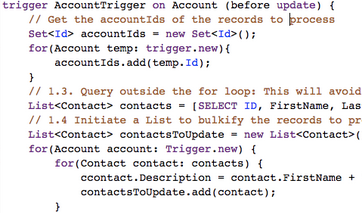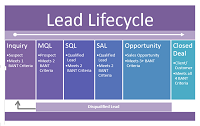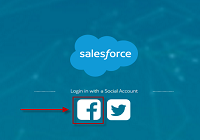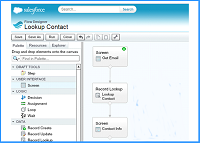
Salesforce CRM isn’t the number one customer relationship management program for nothing. Aside from the core functionality, however, there is so much opportunity and peripheral usefulness built into the Salesforce platform that it has evolved into its own ecosystem in which organizations can live and self-sustain without much need to venture into other software. The drawback to this ecosystem is simply that each niche requires exploration to discover why, how, and to what extent it can be useful to any given organization. In the spirit of exploration and adventure, today we will dive into the Approval Process in the Salesforce Organization.
First of all, what is the approval process? In technical terms, it is an automated process used by organizations to approve Records within Salesforce CRM. What is a Record, you ask? Well, data in Salesforce feeds from standard or custom objects created by each organization’s developers based on that organization’s needs. A custom Object is basically a database table made up of columns and rows containing all sorts of important data and information. A Record is a single row in its entirety contained within that database table (Object).
The approval process specifies the steps that are necessary for certain records to be approved, and who must approve this record at various steps in the approval process. It dictates the actions to be taken when the record is approved or rejected or recalled, or even when the record is initially submitted for approval.
The Salesforce approval process is very similar to a workflow and actually extends workflow functionality to allow users to approve or reject records while simultaneously tracking and creating an audit trail on the approval history for each record.
But what does all of this mean? When will I even use this?
Funny you should ask; there are tons of everyday uses for the approval process for any organization. For example, if an organization requires job candidates to go through several levels of management approval prior to being issued an offer letter, a multi-step approval business process can be created requiring approval from these different management levels before a letter can be sent.
Organizations can also use this for their Opportunities. Let’s say that a sales rep is able to offer discounts to clients and potential clients. This is a great incentive to obtain and retain sales, and the sales reps have a certain degree of autonomy and discretion in offering these discounts. That being said, the organization must have some checks and balances, so it has the ability to create an approval process that requires CEO approval before the sales rep can issue a discount of 25% or higher.
Additionally, organizations can use the approval process to have employees request any sort of paid leave or time off, have each request escalated to the approving manager, and even have that approved request forwarded to the human resources department for final approval. Or if an organization’s employees file expense reports, the approval process can be used to approve expenses. In fact, with the approval process, the organization can require that expenses over a certain cap require approval from two heads of department, while expenses below that cap but above a very low threshold require only direct manager approval, and at the very lowest level, the expenses are approved automatically.
Well, this sounds super useful, how can I set this up?

As mentioned, the Salesforce approval process extends workflow functionality. When defining an approval process, keep in mind that the organization needs to specify who must approve the record and in what order the approval flow must go. This allows the organization to set up initial actions, actions on various steps in the process, and even actions for after the record has been fully approved (or rejected).
To set up an approval process, the organization must first set up its entry criteria to define when to start the approval process. Next up, the organization needs to determine who needs to approve each individual record or set of records once the approval process begins – this needs to be done at each step in the flow process for different levels of approval. Similar to a workflow, the organization will need to define a set of actions to execute both when the approval begins and when it ends.
Using the previous examples, the organization may need to set conditions for approval, so that any value submitted that is less than value x flows to approval route 1, any value submitted that is greater than value x but less than value y flows to approval route 2, and any value submitted that is greater than value y flows to approval route 3 (e.g. expense reports). Similarly, it may be more of a flow; once the approval process begins it flows to the department manager first, the HR manager second, and finally to the CEO before being fully approved (e.g. hiring process). It can also be a simple one-step verification: the employee books time off and it gets kicked up to his or her manager to approve, or, the sales rep wants to give Company XYZ a 30% discount and this requires approval from the CEO.
The approval process can also automatically send an email or notification, update a field in Salesforce, or generate a task once initiated. The entire process can also be tracked in the approval history related list on each record type’s detail page meaning that there is a full audit trail showing where the record type is within the approval process and when it is approved or rejected at each step in the process. This gives the organization a lot of oversight and control over each approval process and makes it easy to identify who approved or denied what decisions.
All in all, this makes the Salesforce approval process a very enticing option for any organization or user. It can free up precious hours spent tracking paper or email requests, reduce human error, improve validation rules, create a visual workflow and ensure that the right queries and submissions are being sent to the right people for approval requests. Moreover, the ability to track the approval process, coupled with the sheer functionality of it, means that more and more processes can become autonomous, giving employees more opportunity and greater control of their time with fewer roadblocks to being productive, and giving organizations a way to reduce errors and oversights by keeping detailed logs of approval flows, ultimately increasing performance and productivity.
What Certification are you studying for now?
Focus on Force currently provides practice exams and study guides for sixteen certifications















